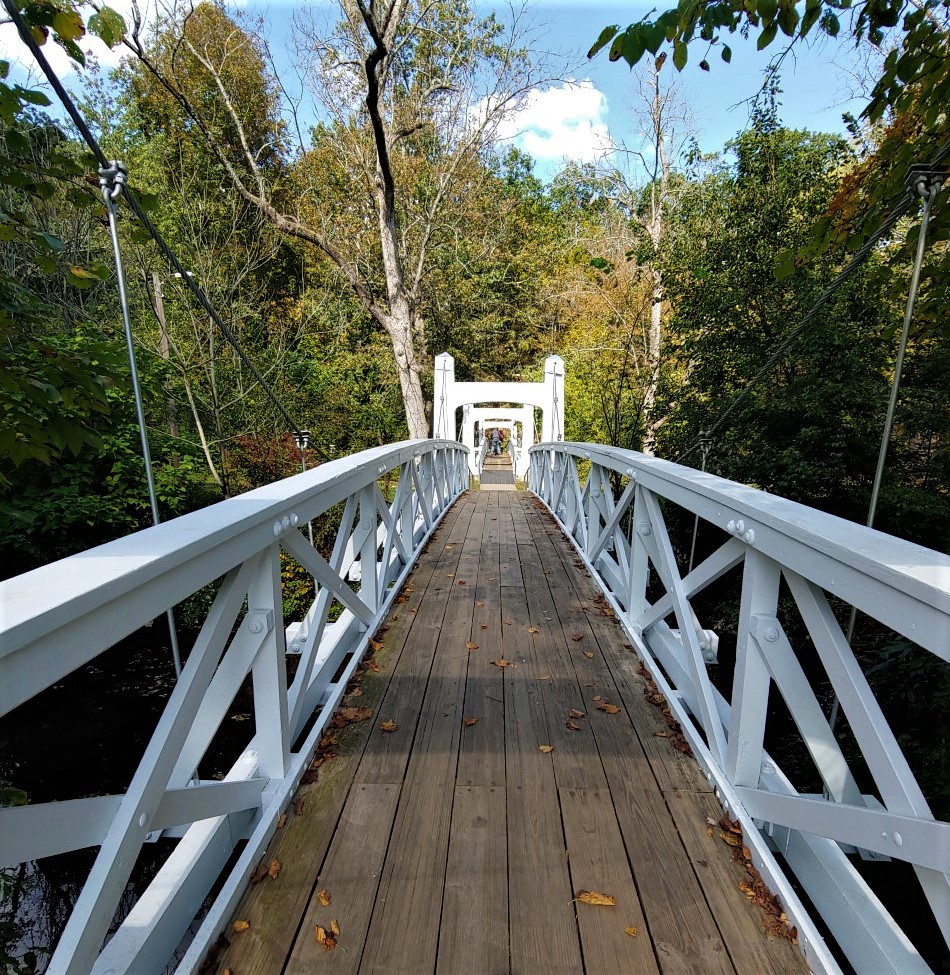With ingenuity and vision, two cities gave us the wondrous Lenape Lake/Menlo Park.
I got the call from my daughter before the pandemic. “Hey, Dad. You really need to visit Perkasie. The swimming pool and park are amazing.” I couldn’t join her and the grand kids that day for a family splash. But I did get there recently to bike the park and take in what was born 83 years ago as a joint project of Perkasie and Sellersville. It is amazing for what it features in its mile-long concourse. A covered bridge built 188 years ago. Twin suspension spans linking an island to both sides of Perkiomen Creek. Winding bike paths through woodlands. Baseball and soccer fields. An antique carousel. A public swimming park with multiple slides and fountains. A café in an old grist mill.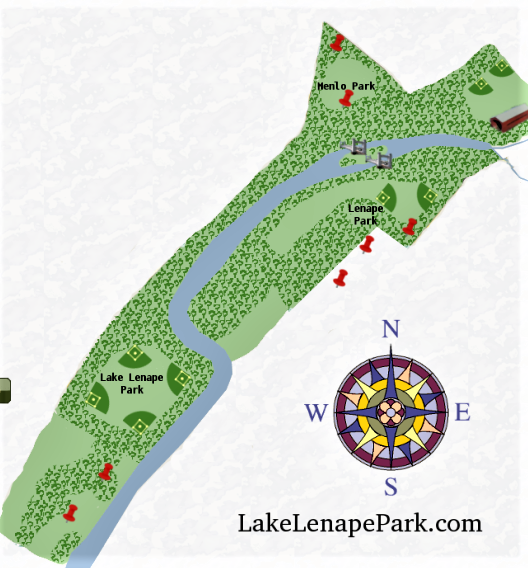
Bike riders, couples leading dogs on the trails, babies in strollers and exuberant children made a lively setting during my visit. A Little League baseball game was underway, back dropped by an historic home turned into league headquarters.
Lake Lenape Park, named for indigenous Native Americans, illustrates how two communities can come together in a time of national economic peril to find a means to restore civic pride and lay a foundation for prosperity. The idea was to create a landscaped, 122-acre park connecting Sellersville with Perkasie by restoring a dam, re-watering a former lake and otherwise revitalizing a despoiled section of the East Branch of the Perkiomen flowing through both towns.
In the midst of the Great Depression of the 1930s, the odds of success weighed against the project. A trolley company owned much of the land and had set a high price. The centerpiece would be restoring the lake. That would cost lots of mullah. A new dam was needed plus pedestrian bridges over the river to add aesthetics and access.
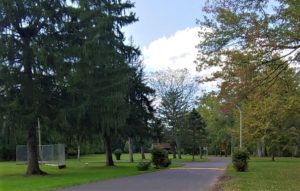
The chief visionary was David Cressman, chairman of the newly-born Sellersville Parkway Commission. Dave could remember when the lake was a magnet at the former Menlo Amusement Park built in the 1890s. The park included a unique toboggan ride on scaffolding down a hillside to the river. A makeshift dam enabled boating, fishing and ice skating. By 1930 the spillway had deteriorated due to flooding. Damage reduced the lake to a wetland stream. The key to achieving Dave’s dream was building a replacement dam. But how to fund it?
The locals appealed to Bill Wilhelm, landscape engineer for the county branch of the federal Works Progress Administration. The Depression-era program put unemployed citizens to work building infrastructure, something talked about in Washington today to resolve unemployment. Wilhelm was most enthusiastic about Sellersville’s plan for a new dam, dredging the river to establish a central island linked to the mainland by two suspension footbridges. The spans were to resemble miniaturized versions of the Brooklyn Bridge built by John A. Roebling & Sons of Roebling, N.J.
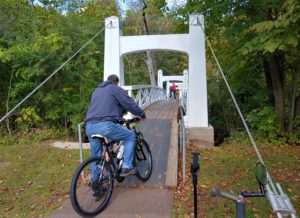
From the start, county President Judge Hiram Keller endorsed the plan, hoping it would spark reclamation efforts elsewhere in Bucks County. In fact, the new park became the forerunner of the county’s park system, rails-to-trails efforts and many local greenbelt projects such as Falls Township’s community park built around an abandoned quarry.
In Sellersville, it took several years to negotiate land purchases, particularly from the trolley company that ultimately lowered its price. Meanwhile, Perkasie joined the effort. The city in conjunction with the county commissioners bought a 30-acre portion of Perkasie’s adjoining Menlo Park from owner Henry Wilson to add to the new park. Wilson in turn used the money to construct a large public swimming pool in his entertainment center on a bluff overlooking Lake Lenape Park. Work on a dam got underway in 1936 as well as widening and deepening the river. Approximately 140 workers did the manual labor for a wage equivalent to $2 an hour today. Total cost was $190,000 for materials and labor, mostly paid in federal money. Roebling, then at work on the Golden Gate Bridge in California, got the contract for the suspension cables for the Lake Lenape bridges.
At the time, state government was about to demolish the South Perkasie Covered Bridge built in 1832. A community campaign led to the bridge being relocated to a land-locked site in the new park.
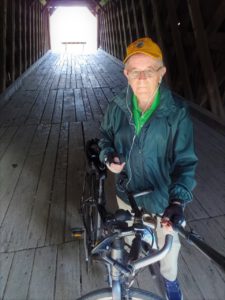
The park stretching along the Perkiomen from Walnut Street in Perkasie downstream to Diamond Street in Sellersville officially opened on Sept. 11, 1937 to a crowd of several thousand visitors. Edmund Kirby, state deputy attorney general, keynoted the event. “This is a purely humanitarian project,” he told the crowd. “It is placed here with the hope that it will bring many pleasant days to children of the future in return for the efforts put forth in its construction.”
My grandchildren Dashiell and Margaux are among those kids of the future and they attest, “It’s so fun!”
***
Sources include “Our WPA Wonder: Lake Lenape Park” by Scott Bomboy published August 15 on www.preservingperkasie.com, and “Sellersville Plans Beautiful River Parkway With Swimming and Boating Facilities” published Dec. 17, 1935 in Allentown’s Morning Call.

